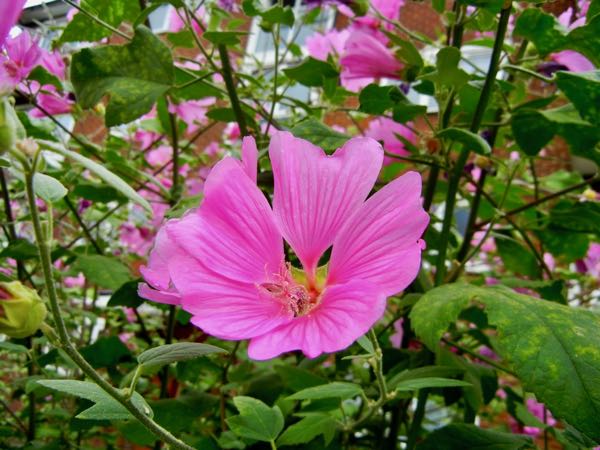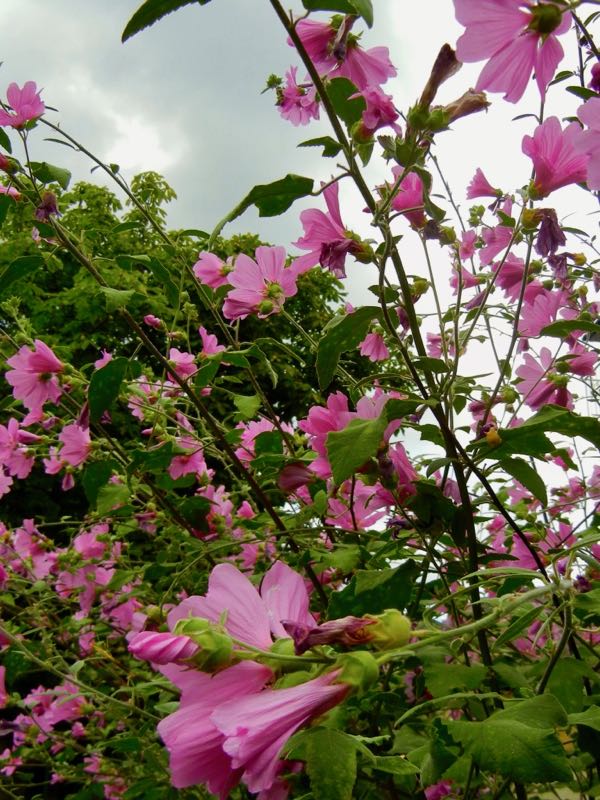Malva alcea: The Greater Musk Mallow
Background and Family:
Malva alcea, commonly known as Greater Musk Mallow, Cut-leaved Mallow, Hollyhock Mallow, or Vervain Mallow, belongs to the Malvaceae family of plants. This herbaceous perennial is native to Southeast Europe to the Caucasus region. It is admired for its ornamental value, with its attractive flowers and foliage.
Characteristics:
Malva alcea is a robust perennial that can reach a height of 120cm or 4ft. The stems of the plant are covered in fine hairs. The foliage is a lighter shade of green, and the leaves are palmately lobed with five to seven lobes. The basal leaves may vary in their lobe depth, with more shallow lobes compared to the deeply divided top leaves.
Flowers and Fragrance:
The flowers of Malva alcea are charming pink blooms. They are single and emerge from the leaf axils. Typically, these flowers have five petals. While Malva alcea does not possess a strong fragrance or aroma, its delightful blooms make it an attractive addition to any garden. The flowering season occurs during the summer and early fall, adding vibrant color to the landscape.
Cultivation of Malva alcea:
Malva alcea can be successfully cultivated with proper care and attention. Here are some key aspects to consider:
Sunlight: Grow Malva alcea in a location that receives abundant sunlight. It thrives in full sun, although it can tolerate partial shade. Full sun exposure is essential for optimal flowering.
Watering: Provide regular and consistent watering to ensure the plant’s health and vigor. During hot and dry weather, pay special attention to watering to prevent drought stress. Maintain moist soil conditions without waterlogging.
Soil: Malva alcea adapts well to various soil types but thrives in fertile, well-drained soil. Prior to planting, enrich the soil with organic matter such as compost or manure. This helps improve soil structure, moisture retention, and nutrient availability.
Pests and Diseases: While Malva alcea is generally resistant to major pest and disease issues, it may still encounter certain problems. Keep a lookout for aphids and rust. If aphids are present, control them using insecticidal soap or neem oil. For rust, apply a suitable fungicide as per the manufacturer’s instructions.
Propagation:
Malva alcea can be propagated through different methods:
- Seed: Sow seeds indoors during winter and transplant the seedlings outdoors in the spring.
- Basal Cuttings: Take basal cuttings in spring or early summer. Ensure the cuttings are placed in a well-draining potting mix for rooting.
- Softwood Cuttings: Softwood cuttings can also be taken during the spring or summer months. Use a well-draining potting mix for successful rooting.
- Division: Divide mature plants in the spring or fall to create new plants. Ensure each division has a healthy root system and foliage.
With proper cultivation practices, Malva alcea can thrive, showcasing its lovely flowers and enhancing the aesthetic appeal of gardens and landscapes. Its edible leaves, flowers, and seeds add to its appeal, making it a versatile plant for both visual enjoyment and culinary use.





